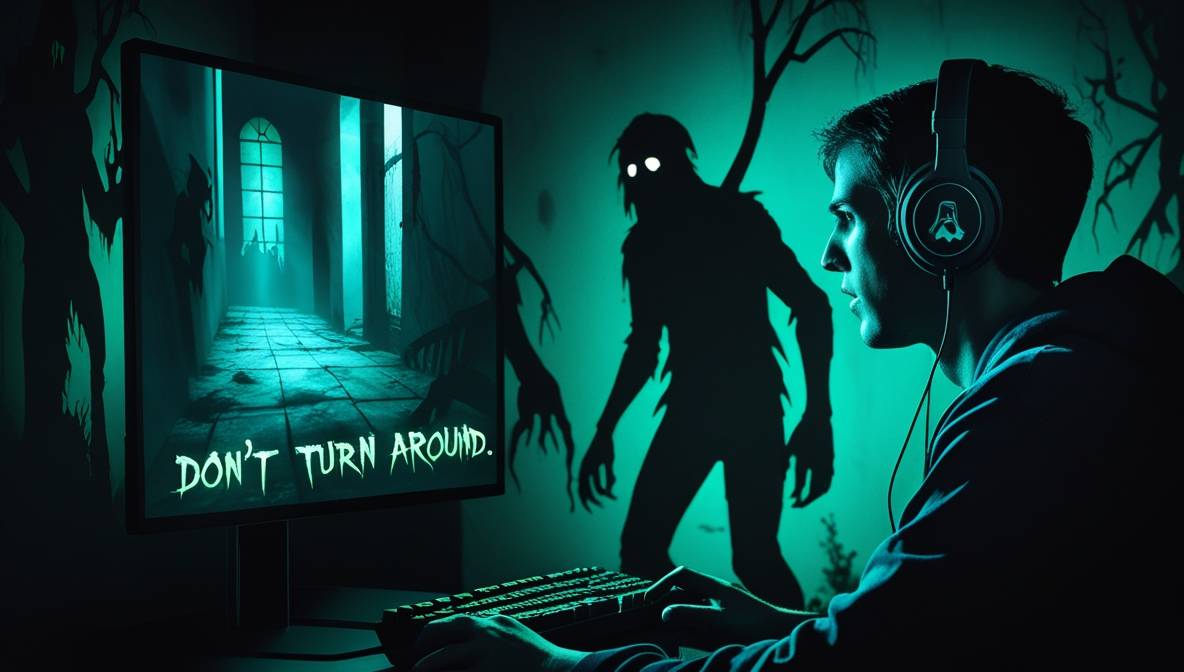Playing horror games in the dark isn’t just a trend—it’s a ritual. At VipGame24, we’ve curated the scariest titles across genres that demand to be experienced with lights off and headphones on.
Why Play Horror Games in the Dark?
- Heightened Senses: Darkness sharpens focus on audio cues and subtle visuals.
- Immersion: Eliminates distractions, pulling you deeper into the game’s world.
- Adrenaline Surge: Fear triggers fight-or-flight responses for an unforgettable rush.
For the full effect, pair these games with our recommended gaming headsets.
Criteria: What Makes a Horror Game Perfect for the Dark?
| Factor | Why It Matters | Example Games |
|---|---|---|
| Atmospheric Tension | Builds dread through environment | Silent Hill, Darkwood |
| Sound Design | Eerie noises amplify fear | Amnesia, Outlast |
| Story Depth | Engages emotionally | Soma, Layers of Fear |
| Visuals | Enhances realism of scares | Resident Evil 7, The Evil Within |
Classic Horror Games That Defined the Genre
1. Resident Evil (1996)
- Platforms: PS1, PC, Remastered on modern consoles
- Fear Factor: Limited ammo, zombie hordes, and the iconic Spencer Mansion.
- Best Moment: Your first encounter with a Crimson Head.
2. Silent Hill 2 (2001)
- Platforms: PS2, PC
- Fear Factor: Psychological terror fueled by guilt and fog-shrouded monsters.
- Pro Tip: Play with the original PS2 fog effects for maximum unease.
3. Amnesia: The Dark Descent (2010)
- Platforms: PC, Consoles
- Fear Factor: Sanity mechanics where darkness literally drives you mad.
Why These Classics Still Terrify:
- Timeless storytelling.
- Resource scarcity forces tense decision-making.
Modern Horror Masterpieces
1. Outlast (2013)
- Platforms: PC, PS4, Xbox One, Switch
- Tech: Night-vision camcorder + pitch-black asylum corridors.
- Scare Level: ★★★★★
2. Resident Evil 7: Biohazard (2017)
- VR Compatibility: PSVR turns the Baker family into in-your-face nightmares.
- Key Feature: Photorealistic graphics amplify gore and jump scares.
3. Visage (2020)
- Inspiration: Spiritual successor to PT.
- Mechanics: Haunted house where every object holds memories of the dead.
Indie Gems That Out-Scare AAA Titles
1. Darkwood (2017)
- Style: Top-down, procedurally generated survival horror.
- Unique Twist: Daylight is safe(ish); nights are pure terror.
2. SOMA (2015)
- Philosophical Horror: Explores consciousness in a drowned research facility.
- Best Played With: Noise-canceling headphones to catch whispers.
3. Layers of Fear 2 (2019)
- Theme: A crumbling cruise ship mirrors the protagonist’s fractured psyche.
Why Indie Horror Shines:
- Creative risks (e.g., no combat in Amnesia).
- Focus on atmosphere over jump scares.
Multiplayer Horror: Scream With Friends
| Game | Players | Concept | Platform |
|---|---|---|---|
| Phasmophobia | 1–4 | Ghost hunting with voice recognition | PC (VR) |
| Dead by Daylight | 1v4 | Survive iconic killers like Myers | All platforms |
| The Outlast Trials | 1–4 | Cooperative asylum experiments | PC, Consoles |
Pro Tip: Use Discord for clear comms—if you dare.
Psychological vs. Survival Horror
| Aspect | Psychological (e.g., Silent Hill) | Survival (e.g., Resident Evil) |
|---|---|---|
| Core Fear | Mental breakdown | Physical threat |
| Gameplay | Puzzle-solving, exploration | Combat, resource management |
| Best Played… | Alone, late at night | With friends for shared scares |
Prepare Your Horror Gaming Setup
- Sound: 7.1 surround sound or high-end headphones.
- Lighting: Blackout curtains + dimmable RGB lights.
- Comfort: Ergonomic chair (escape those jump scares!).
Check our gaming wellness guide to avoid burnout.
Final Thoughts
Horror games thrive in darkness, where every shadow and whisper feels real. Whether you’re unraveling Silent Hill’s foggy mysteries or fleeing Outlast’s horrors, these titles demand to be played lights-out. For more spine-chilling recommendations, explore VipGame24’s horror games category.

